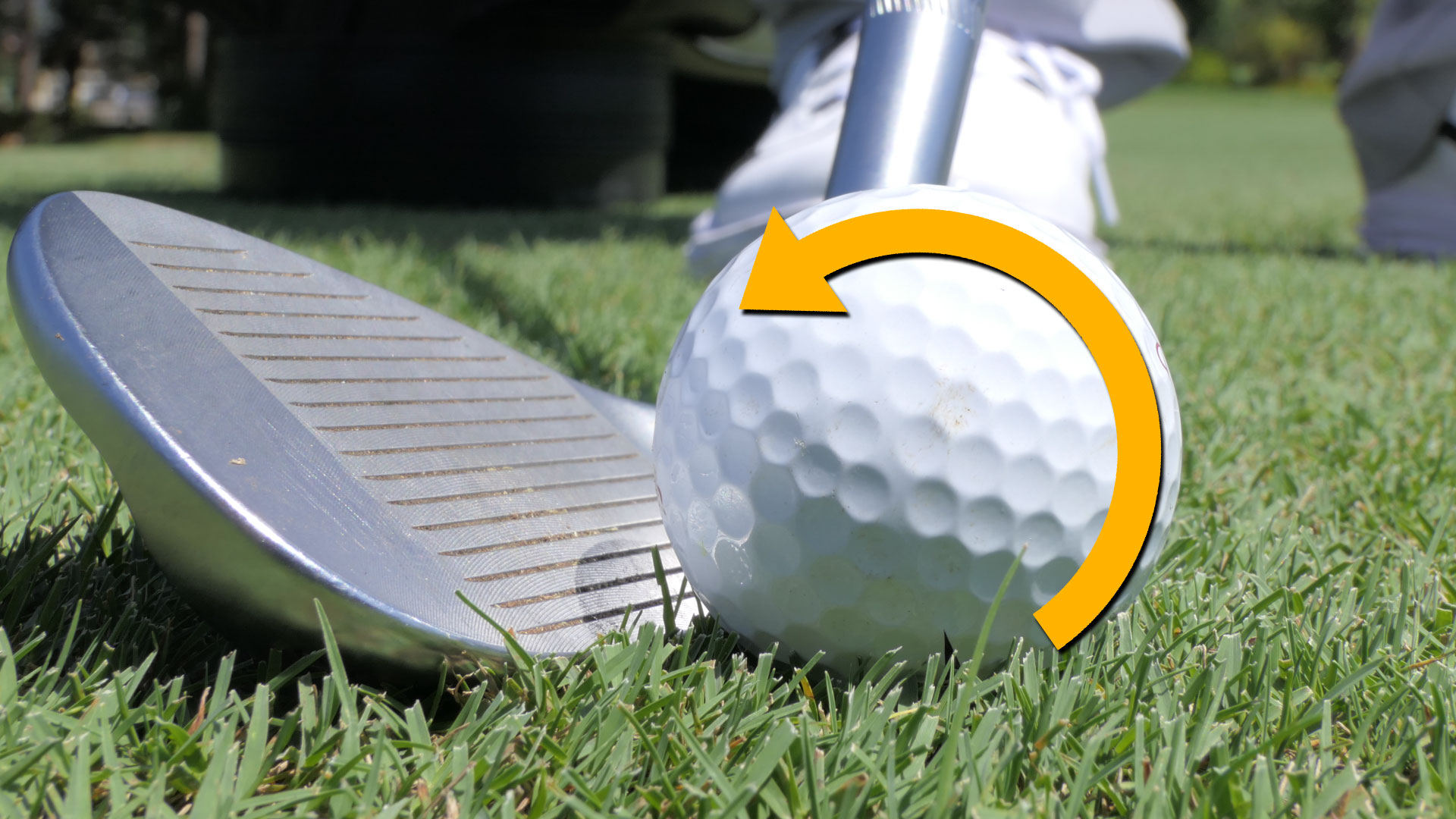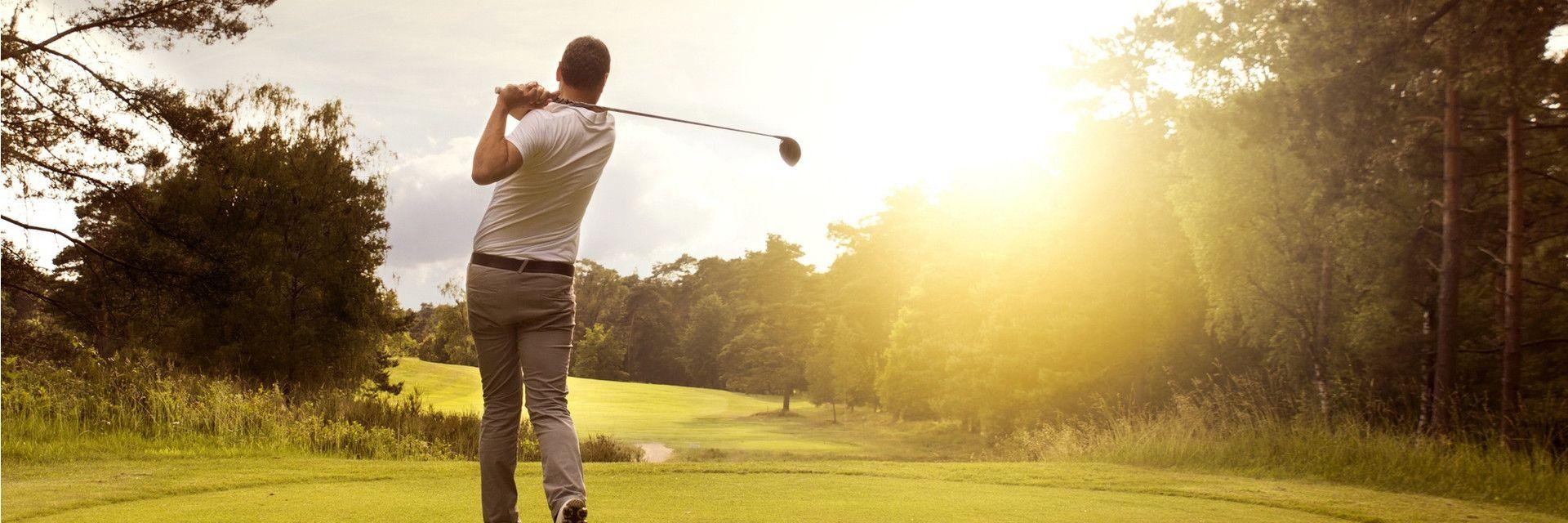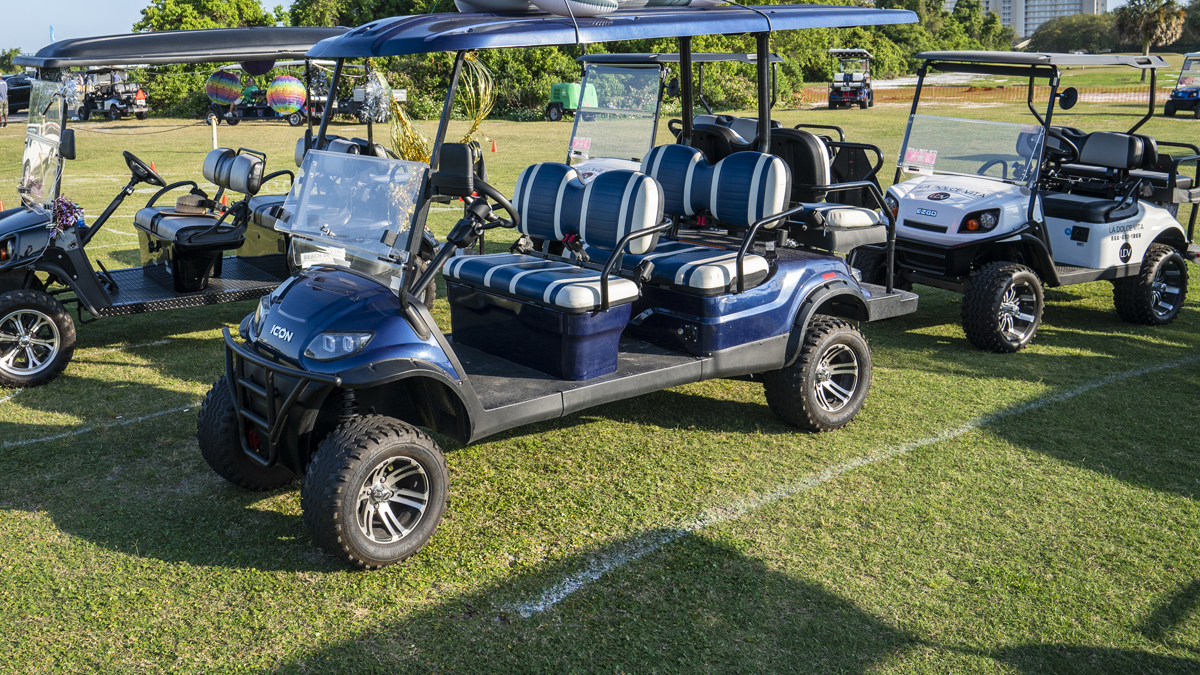Master the Wedge: How to Put Backspin on a Golf Ball
To put a backspin on a golf ball with a wedge, strike the ball with a descending blow and hit the ball with a clean, square clubface. This will create friction between the grooves on the clubface and the ball, causing it to spin backward upon landing.
It’s a versatile shot that can add precision to your game. Golfers strive to learn every trick and tip to elevate their game to the next level. One such trick is putting a backspin on a golf ball with a wedge.
Backspin is a shot in which the ball spins backward upon landing, allowing it to stop quickly and avoid rolling off the green. It’s a useful skill to have in your golfing arsenal and can help you get out of tricky situations. Believe it or not, it’s not as difficult as it looks – all you need is a little bit of understanding of the technique and a lot of practice. In this article, we’ll walk you through the steps to put a backspin on a golf ball with a wedge.

Credit: topspeedgolf.com
Understanding The Basics Of Backspin
Golf is an exciting game that requires skill and precision. One of the essential skills you must master is putting a backspin on the ball. Backspin is a crucial part of getting your ball where you want it to go, especially when using a wedge.
In this section, we’ll cover the basics of backspin, how it affects the trajectory of the ball, and the techniques required to produce backspin.
What Is Backspin?
Backspin is the spin imparted on a golf ball that causes it to rotate backward when hit. The rotation creates a lift, which keeps the ball in the air and helps it to stop sooner when it lands. Backspin is what causes the ball to check or spin backward when it lands on the green.
Without a backspin, the ball would bounce and roll forward, making it challenging to control the shot.
How Does It Affect The Trajectory Of The Golf Ball?
Backspin affects the trajectory of the ball because it adds lift and reduces the effect of gravity on the ball. The lift created by the backspin helps the ball to stay in the air longer and carry further than a ball hit without spin.
It also reduces the forward motion of the ball, causing it to stop more quickly when it hits the ground. Understanding how backspin affects the ball’s trajectory is essential for controlling shots on the green.
How To Produce Backspin On A Golf Ball?
To produce a backspin on a golf ball, you must hit down on the ball, making contact with the ball first and then the turf. Here are some simple techniques to produce backspin:
- Use the right equipment: A wedge with a loft of 56 degrees or more is the most effective tool for producing backspin.
- Select the right ball: A ball with a urethane cover is best when looking to produce a backspin.
- Set up correctly: Position your ball in the middle of your stance and align your clubface to your target.
- Focus on your swing: Strike down on the back of the ball with a descending blow, using a slightly open clubface and a square stance.
- Follow through: Complete your shot by swinging down and through the ball with force, allowing the backspin to take hold.
Producing backspin on a golf ball takes practice and patience. Get all the basics down first and work on applying them consistently to your shots. With practice, you’ll be able to put a backspin on your golf ball and control it with accuracy.
Keep in mind that every golfer is unique, so experiment with different techniques until you find the ones that work best for you.
Choosing The Right Wedge For Backspin
Overview Of Different Types Of Wedges And Their Specifications
When playing golf, having a great wedge that can produce a backspin is essential. There are four primary types of wedges – pitching wedge, gap wedge, sand wedge, and lob wedge – each with specific specifications.
- Pitching wedge: This wedge has the lowest loft angle, ranging from 44 to 48 degrees. It is widely used for shots that require less backspin, such as approach shots and chipping.
- Gap wedge: Also known as the approach wedge, it has a loft angle of 50 to 54 degrees and is perfect for mid-range shots that require more accuracy.
- Sand wedge: With a higher loft angle of 54 to 58 degrees, this wedge has a more massive clubhead and weight distribution that helps it perform well in bunkers.
- Lob wedge: This wedge has the highest loft angle, between 58 to 62 degrees, and produces the most backspin. It is generally used for tricky shots that require a higher level of accuracy.
How To Choose The Best Wedge For Producing Backspin Based On The Situation
Your ability to produce a backspin with a wedge depends on the club’s design, the surface area of the clubface, and the ball’s compression. Here are some tips to help you choose the best wedge based on the situation:
- Consider the situation: Choose a club based on the situation, such as the distance to the hole, the height of the shot, the lie of the ball, and any obstacles that may be in the way.
- Select the right loft angle: Choosing a wedge that has a higher loft angle and more weight around the clubface will help you produce more backspin.
- Choose the right club design: Wedges that have wide and shallow grooves tend to produce the most backspin, because wider grooves help channel debris away from the clubface, allowing the ball to come in direct contact.
- Focus on the ball position: Consider the position of the ball in your stance. Positioning it more forward in your stance can help you produce more backspin.
Factors To Consider When Selecting A Wedge
When selecting a wedge for producing backspin, there are a few essential factors to consider:
- Club material: Wedges can be made from various types of materials, including stainless steel, carbon steel, zinc, and aluminum. In general, the softer the metal, the more backspin you can generate.
- Bounce angle: Wedges with a high bounce angle are better for fluffy lies, while lower bounce angles are better for tighter lies.
- Shaft material: The shaft can also affect the wedge’s ability to produce a backspin. Wedges with a more flexible shaft are better if you want to produce a more significant backspin.
- Personal preference: Ultimately, choosing a wedge that feels comfortable and suits your playing style is the most important factor. Experiment with different clubs to determine which one will help you produce the backspin you want.
By following these tips and considering all the factors outlined above, you can select the right wedge that will help you put a backspin on the golf ball and improve your overall game.
Techniques For Putting Backspin On A Golf Ball
Putting a backspin on a golf ball is a technique that lets your ball stop quickly on the green, making it easier to score. Even though it may seem like a challenging technique to some, with some practice and patience, one can master it quickly.
In this blog post, we will take a deep dive into different techniques for putting a backspin on a golf ball, tips to choose a method, and drills to practice it. Let’s get started with our first heading.
Different Techniques For Putting Backspin On A Golf Ball
Several techniques can help you put a backspin on a golf ball. Here are our top picks:
- Ball position: The ball’s location in relation to your stance is crucial when it comes to creating a backspin on the ball. Try aligning the ball with your back foot as it makes it easier to hit down on it, allowing you to create a backspin.
- Club choice: The type of club you use can also affect the backspin you create. Wedges with higher lofts are ideal for creating more backspin, so it’s best to use a lob or sand wedge.
- Swing angle: The angle of your club face at the point of contact contributes significantly to the backspin you create. Aim for a descending blow on the ball with a slightly open clubface, allowing the ball to create more spin.
Choosing The Right Technique For The Situation
Choosing the proper technique for putting a backspin on a golf ball depends on several factors, such as wind speed, slope of the green, and distance from the hole. Here are a few tips you should keep in mind while choosing the right technique:
- Wind speed: If the wind is blowing against the ball, you need to create more backspin than usual to prevent the ball from rolling off the green.
- The slope of the green: A steeper slope means that the ball may roll faster than a flat surface. Creating more backspin helps to slow the ball down.
- Distance from the hole: The closer the ball is to the hole, the less backspin you need to create.
Drills And Exercises To Practice Backspin Techniques
As the saying goes, practice makes perfect, and the same goes for creating a backspin on a golf ball. Here are some drills and exercises to help you perfect your technique:
- Short shots: Focus on hitting short shots around the green, and pay attention to the ball’s response when it lands on the green.
- Downhill chips: Try hitting shots downhill and see how much spin you can generate on the ball to stop it near the hole.
- Ball-first contact: Make sure you hit the ball before ground contact, keeping your clubface slightly open to create more backspin.
- Use an impact bag: Hitting an impact bag helps you learn to hit down on the ball and develop a descending blow, creating maximum backspin.
Creating a backspin on a golf ball is a golf technique that can benefit all types of players, regardless of their skill level. With some practice and choosing the right technique, you can soon create maximum backspin on your shots and improve your game.
Mastering The Wedge: Tips And Tricks
If you’re a golf player looking to up your game, one of the essential skills to master is putting a backspin on a golf ball with a wedge. Luckily, there are some simple tips and tricks that can help you achieve this.
Here are some advanced tips and tricks for mastering the wedge and putting backspin on a golf ball:
Advanced Tips And Tricks For Mastering The Wedge And Putting Backspin On A Golf Ball
- Choose the right wedge: The first step to putting a backspin on a golf ball is selecting the right wedge. Look for a higher lofted wedge as this will allow you to get more spin on the ball.
- Take a steep angle of attack: To maximize your chances of creating a backspin, take a steeper angle of attack. This means that you should strike the ball with a more downward swing.
- Hit the ball with precision: When it comes to putting a backspin on a golf ball, accurate contact is crucial. Aim for the back of the golf ball to create spin.
- Adjust your stance and ball position: Experiment with the position of the ball in your stance. Moving the ball back in your stance can create more spin. Alongside this, adjust your stance to match the position of the ball.
Mental Strategies For Improving Wedge Play
The way you approach your wedge shots can have a big impact on your ability to create a backspin and improve your abilities. Here are some mental strategies to work on:
- Visualize the shot: Before hitting the ball, visualize the shot you want to make. This can help with your alignment, swing, and contact with the ball.
- Be confident: Confidence is key when it comes to golf. Trust in your abilities, and commit to the shot.
- Practice under different conditions: Practicing under different conditions, such as wind, different lies, and different distances, can help you develop the skills required to create a backspin.
How To Integrate Wedge Play Into Your Overall Golf Gameplan
Putting a backspin on a golf ball with a wedge is just one aspect of the game. Here are some tips for how to integrate wedge play into your overall golf gameplan:
- Analyze your strengths and weaknesses: Analyzing your strengths and weaknesses in the course can help you identify areas to work on. Work on improving your weaknesses while further refining your strengths.
- Set goals: Setting goals is a great way to focus your efforts and track your progress. Create achievable goals, and continue to work towards them.
- Practice regularly: Regular practice is key when it comes to improving your golf game. Make sure to allocate time for practicing your wedge shots.
Keep these tips and tricks in mind, and you’ll be well on your way to mastering the wedge and putting a backspin on a golf ball. Happy golfing!
Frequently Asked Questions Of How To Put Backspin On A Golf Ball With A Wedge
How Does Backspin Affect A Golf Ball’S Flight?
Backspin makes the ball stop faster on the green and stick to the surface.
How Do I Choose The Right Wedge For Backspin?
Select a wedge with the proper loft and bounce angle that suits your swing and playing style.
How Do I Properly Hit A Wedge Shot With Backspin?
Open the clubface, aim slightly left of the target, and hit down on the ball with a descending strike.
Conclusion
By following the tips mentioned in this blog post, you can learn how to put a backspin on a golf ball with a wedge. Practice makes perfect, so don’t feel discouraged if you don’t achieve the desired effect right away. Remember to take note of the factors that could affect your shot such as the lie of the ball, the type of ball, and the type of club you’re using.
Keep in mind the importance of clean contact with the ball and the need to create more loft to generate a backspin. Your positioning and follow-through are crucial to achieving the right spin. By mastering the art of creating backspin, you’ll be able to add more control, accuracy, and style to your golf game.
Keep practicing and stay confident, and soon enough, you’ll be able to impress your friends and colleagues with your wedge skills on the golf course.



